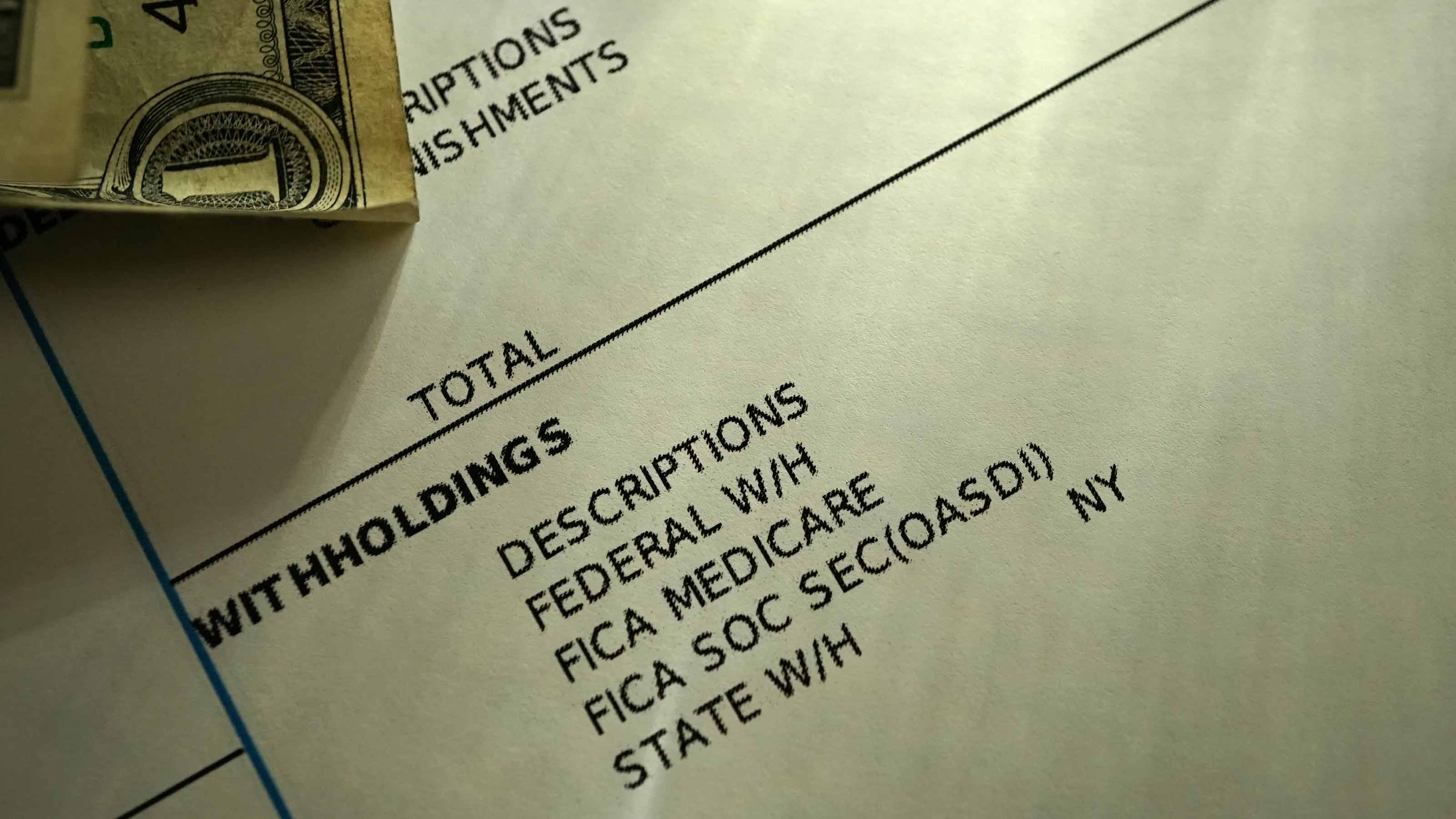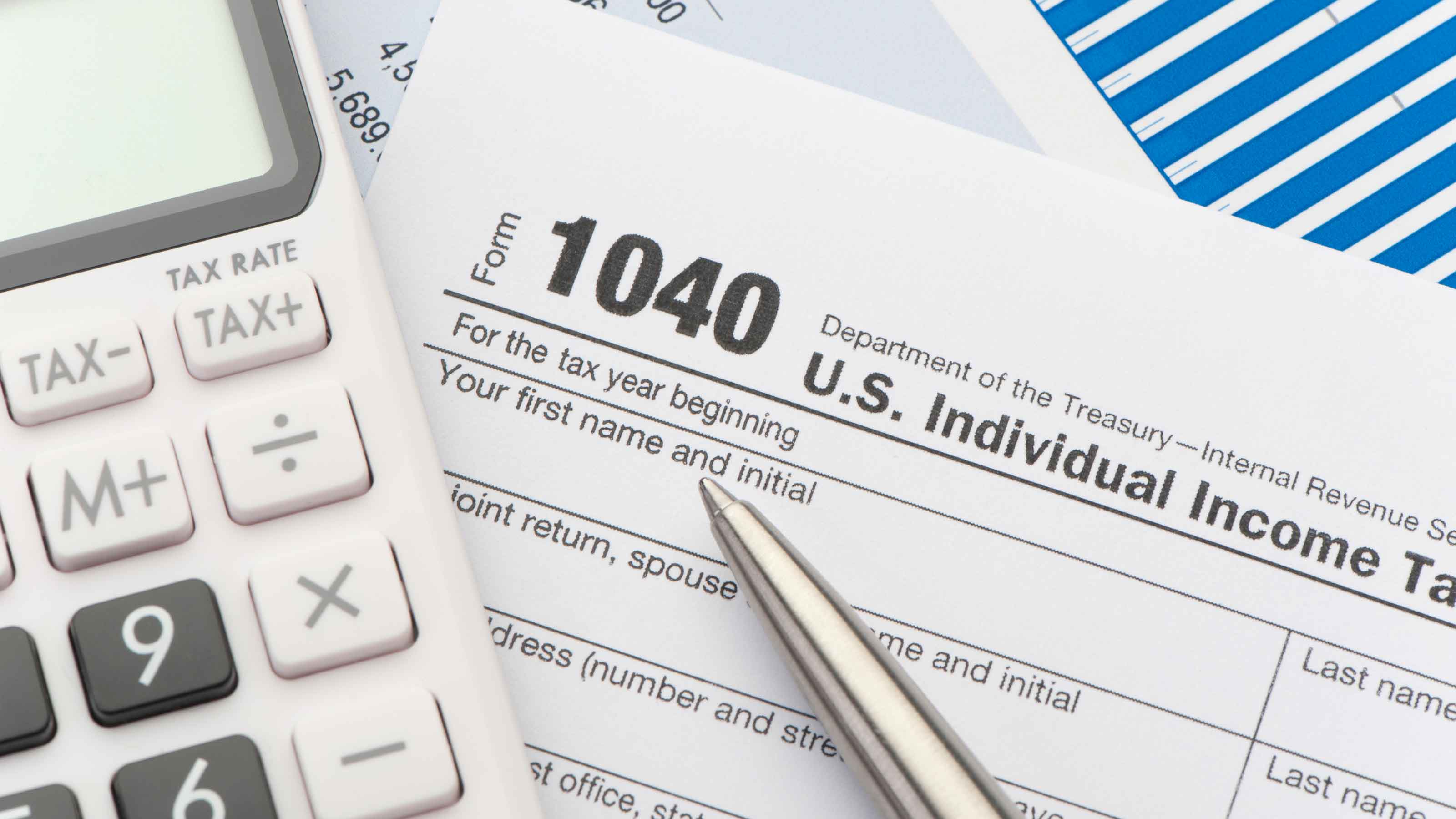Tax Savings for the Wealthy
Stash cash in a self-employed retirement account, be creative with your generosity and think twice about selling stock for a profit if you're subject to the AMT.
Upper-income taxpayers should make these moves throughout the year to keep their bill low at tax time. Here are the areas where you should look for savings:
Tax Savings For: Work | Car and Home | Charitable Contributions | College Savings | Inheritance | Investments and Retirement Savings | Rental Property | Your Children
Work
Give yourself a raise. If you got a big tax refund this year, it meant that you're having too much tax taken out of your paycheck every payday. Filing a new W-4 form with your employer (talk to your payroll office) will insure that you get more of your money when you earn it. If you're just average, you deserve about $225 a month extra. Try our easy withholding calculator now to see if you deserve more allowances.
Go for a health tax break. Be aggressive if your employer offers a medical reimbursement account — sometimes called a flex plan. These plans let you divert part of your salary to an account which you can then tap to pay medical bills. The advantage? You avoid both income and Social Security tax on the money, and that can save you 20% to 35% or more compared with spending after-tax money. The maximum you can contribute to a health care flex plan is $2,500.

Sign up for Kiplinger’s Free E-Newsletters
Profit and prosper with the best of expert advice on investing, taxes, retirement, personal finance and more - straight to your e-mail.
Profit and prosper with the best of expert advice - straight to your e-mail.
Change in family = change in flex plan. If you get married or divorced, or have or adopt a child during the year, you can change the amount you're setting aside in a medical reimbursement plan. If you anticipate more medical bills, steer more pretax money into the account; if you anticipate fewer, you can pull back on your contributions so you don't have to worry about the use-it-or-lose-it rule.
Pay child-care bills with pre-tax dollars. After taxes, it can easily take $7,500 or more of salary to pay $5,000 worth of child care expenses. But, if you use a child-care reimbursement account at work to pay those bills, you get to use pre-tax dollars. That can save you one-third or more of the cost, since you avoid both income and Social Security taxes. If your boss offers such a plan, take advantage of it.
Switch to a Roth 401(k). But if you are concerned about skyrocketing taxes in the future, or if you just want to diversify your taxable income in retirement, considering shifting some or all of your retirement plan contributions to a Roth 401(k) if your employer offers one. Unlike the regular 401(k), you don't get a tax break when your money goes into a Roth. On the other hand, money coming out of a Roth 401(k) in retirement will be tax-free, while cash coming out of a regular 401(k) will be taxed in your top bracket.
Pay tax sooner than later on restricted stock. If you receive restricted stock as a fringe benefit, consider making what's called an 83(b) election. That lets you pay tax immediately on the value of the stock rather than waiting until the restrictions disappear when the stock "vests." Why pay tax sooner rather than later? Because you pay tax on the value at the time you get the stock, which could be far less than the value at the time it vests. Tax on any appreciation that occurs in between then qualifies for favorable capital gains treatment. Don't dally: You only have 30 days after receiving the stock to make the election.
Stash cash in a self-employed retirement account. If you have your own business, you have several choices of tax-favored retirement accounts, including Keogh plans, Simplified Employee Pensions (SEPs) and individual 401(k)s. Contributions cut your tax bill now while earnings grow tax-deferred for your retirement.
Hire your children. If you have an unincorporated business, hiring your children can have real tax advantages. You can deduct what you pay them, thus shifting income from your tax bracket to theirs. Because wages are earned income, the "kiddie tax" does not apply. And, if the child is under age 18, he or she does not have to pay Social Security tax on the earnings. One more advantage: The earnings can serve as a basis for an IRA contribution.
Choose the right kind of business. Beyond choosing what business to go into, you also have to decide on the best form for your business: a sole proprietorship, a subchapter S corporation, a C-corp or a limited-liability company (LLC). Your choice will have a major impact on your taxes.
Don't be afraid of home-office rules. If you use part of your home regularly and exclusively for your business, you can qualify to deduct as home-office expenses some costs that are otherwise considered personal expenses, including part of your utility bills, insurance premiums and home maintenance costs. Some home-business operators steer away from these breaks for fear of an audit. But a new IRS rule makes it easier to claim this tax break. Instead of calculating individual expenses, you can claim a standard deduction of $5 for every square foot of office space, up to 300 square feet.
Watch start-up costs. Generally, the costs of starting up a new business must be amortized, that is, deducted over years in the future. But you can deduct up to $5,000 of start-up costs in the year you incur them, when the tax savings could prove particularly helpful. Take our quiz on savvy start-up moves.
Charitable Donations
Tote up out-of-pocket costs of doing good. Keep track of what you spend while doing charitable work, from what you spend on stamps for a fundraiser, to the cost of ingredients for casseroles you make for the homeless, to the number of miles you drive your car for charity (at 14 cents a mile). Add such costs with your cash contributions when figuring your charitable contribution deduction.
Put away your checkbook. If you plan to make a significant gift to charity, consider giving appreciated stocks or mutual fund shares that you've owned for more than one year instead of cash. Doing so supercharges the saving power of your generosity. Your charitable contribution deduction is the fair market value of the securities on the date of the gift, not the amount you paid for the asset, and you never have to pay tax on the profit. However, don’t donate stocks or fund shares that lost money. You’d be better off selling the asset, claiming the loss on your taxes, and donating cash to the charity.
Be creative with your generosity. A charitable-remainder trust can avoid capital gains taxes on appreciated assets, allow you to receive income for life and receive a tax deduction now for a charitable contribution that will be made after your death. A charitable-lead trust can avoid taxes on appreciated assets, earn an immediate tax deduction and still provide an inheritance for your heirs later. A donor-advised fund can earn you a tax deduction for the full value of appreciated assets now, even though you don't have to determine the recipients of your generosity until later years.
[page break]
College Savings
Use a Roth to save for college. Sure, the “R” in IRA stands for retirement, but because you can withdraw contributions at any time tax- and penalty-free, the account can serve as a terrific tax-deferred college-savings plan. Say you and your spouse each stash $5,000 in a Roth starting the year a child is born. After 18 years, the dual Roths would hold $375,000, assuming 98% annual growth. Up to $180,000 — the total of the contributions — can be withdrawn tax- and penalty-free and any part of the interest can be withdrawn penalty-free, too, to pay college bills.
Save for college the tax-smart way. Stashing money in a custodial account can save on taxes. But it can also get you tied up with the expensive "kiddie tax" rules and gives full control of the cash to your child when he or she turns 18 or 21. Using a state-sponsored 529 college savings plan can make earnings completely tax free and lets you keep control over the money. If one child decides not to go to college, you can switch the account to another child or take it back.
Roll over an inherited 401(k). A recent change in the rules allows a beneficiary of a 401(k) plan to roll over the account into an IRA and stretch payouts (and the tax bill on them) over his or her lifetime. This can be a tremendous advantage over the old rules that generally required such accounts be cashed out, and all taxes paid, within five years. To qualify for this break, you must be named as the beneficiary of the 401(k). If the account goes to the owner’s estate and then to you, the old five-year rule applies..
Investments and Retirement Savings
Check the calendar before you sell. You must own an investment for more than one year for profit to qualify as a long-term gain and enjoy preferential tax rates. The "holding period" starts on the day after you buy a stock, mutual fund or other asset and ends on the day you sell it.
Don't buy a tax bill. Before you invest in a mutual fund near the end of the year, check to see when the fund will distribute dividends. On that day, the value of shares will fall by the amount paid. Buy just before the payout and the dividend will effectively rebate part of your purchase price, but you'll owe tax on the amount. Buy after the payout, and you'll get a lower price, and no tax bill.
Mine your portfolio for tax savings. Investors have significant control over their tax liability. As you near the end of the year, tote up gains and losses on sales to date and review your portfolio for paper gains and losses. If you have a net loss so far, you have an opportunity to take some profit tax free. Alternatively, a net profit on previous sales can be offset by realizing losses on sales before the end of the year. (This strategy applies only to assets held in taxable accounts, not tax-deferred retirement accounts such as IRAs or 401(k) plans).
Avoid the wash sale rule. If you sell a stock, bond or mutual fund for a loss and then buy back the identical security within 30 days, you can't claim the loss on your tax return. The IRS considers the transaction a wash because your economic situation really hasn't changed. It's easy to avoid being stung by the "wash sale" rule, though. Watch the calendar, or buy similar but not identical securities.
Think twice about selling stock for a profit if you're subject to the AMT. Although long-term capital gains benefit from the same 20% maximum rate under both the regular tax rules and the alternative minimum tax, a capital gain can effectively cost more than 20% in AMT-land. The special AMT exemption is phased out as income rises so, for example, a $1,000 capital gain can wipe out $250 of the exemption, effectively exposing $1,250 to tax. That means your tax bill rises by more than $150 for that $1,000 gain.
Consider tax-free bonds. It's easy to figure whether you'll come out ahead with taxable or tax-free bonds. Simply divide the tax-free yield by 1 minus your federal tax bracket to find the "taxable-equivalent yield." If you're in the 33% bracket, your divisor would be 0.67 (1 - 0.33). So, a tax-free bond paying 5% would be worth as much to you as a taxable bond paying 7.46% (5/0.67).
Keep a running tally of your basis. For assets you buy, your "tax basis" is basically how much you have invested. It's the amount from which gain or loss is figured when you sell. If you use dividends to purchase additional shares, each purchase adds to your basis. If a stock splits or you receive a return-of-capital distribution, your basis changes. Only by carefully tracking your basis can you protect yourself from overpaying taxes on your profits when you sell. If you're not sure what your basis is, ask your brokerage or mutual fund company for help. (Financial services firms must now report to investors the tax basis of shares redeemed during the year. For the sale of shares purchased in 2012 and later years, they must also report the basis to the IRS.)
Tell your broker which shares to sell. Doing so gives you more control over the tax consequences when you sell stock. If you fail to specifically identify the shares to be sold, the tax law's FIFO (first-in-first-out) rule comes into play and the shares you've owned the longest (and perhaps the ones with the biggest gain) are considered to be sold. With mutual funds, an "average basis" can be used when determining gain or loss; but that alternative isn't available for stocks.
Beware of Uncle Sam's interest in your divorce. Watch the tax basis — that is, the value from which gains or losses will be determined when property is sold — when working toward an equitable property settlement. One $100,000 asset might be worth a lot more — or a lot less — than another, after the IRS gets its share. Remember: Alimony is deductible by the payer and taxable income to the recipient; a property settlement is neither deductible nor taxable.
[page break]
Rental Property
Watch the calendar at your vacation home. If you hope to deduct losses attributable to renting the place during the year, be careful not to use the house too much yourself. As far as the IRS is concerned, "too much" is when personal use exceeds more than 14 days or more than 10% of the number of days the home is rented. Time you spend doing maintenance or repairs does not count as personal use, but time you let friends or relatives use the place for little or no rent does.
Take advantage of tax-free rental income. You may not think of yourself as a landlord, but if you live in an area that hosts an even that draws a crowd (a Super Bowl, say, or the presidential inauguration), renting out your home temporarily could make you a bundle—tax-free—while getting your out of town when tourists overrun the place. A special provision in the law lets you rent a home for up to 14 days a year without having to report a dime of the money you receive as income.
Your Children
Fund a Roth for you child or grandchild. As soon as a child has income from a job — such as babysitting, a paper route, working retail — he or she can have an IRA. The child's own money doesn't have to be used to fund the account (fat chance that it would). Instead, a generous parent or grandparent can provide the funds, or perhaps match the child's contributions dollar for dollar. Long-term, tax-free growth can be remarkable.
Minimize the bite of the kiddie tax. The rule that taxes on a child's income at the parents' rate now covers children up to age 18. You can minimize the damage by steering a child's investments into tax-free municipal bonds or growth stocks that won't be sold until the child turns 18.
Help your children earn credit for retirement savings. This credit can be as much as $1,000, based on up to 50% of the first $2,000 contributed to an IRA or company retirement plan. It's available only to low-income taxpayers, though, who are often the least able to afford such contributions. Parents can help, however, by giving an adult child (who cannot be claimed as a dependent) the money to fund the retirement account contribution. The child not only saves on taxes but also saves for his or her retirement.
Tally adoption expenses. Thousands of dollars of expenses incurred in connection with adopting a child can be recouped via a tax credit, so it pays to keep careful records. The credit can be as high as $13,400. If you adopt a special needs child, you get the maximum credit even if you spend less.
Pay child-care bills with pre-tax dollars. After taxes, it can easily take $7,500 or more of salary to pay $5,000 worth of child care expenses. But, if you use a child-care reimbursement account at work to pay those bills, you get to use pre-tax dollars. That can save you one-third or more of the cost because you avoid both income and Social Security taxes. If your boss offers such a plan, take advantage of it.
Get Kiplinger Today newsletter — free
Profit and prosper with the best of Kiplinger's advice on investing, taxes, retirement, personal finance and much more. Delivered daily. Enter your email in the box and click Sign Me Up.
-
 Stock Market Today: Stocks Soar on China Trade Talk Hopes
Stock Market Today: Stocks Soar on China Trade Talk HopesTreasury Secretary Bessent said current U.S.-China trade relations are unsustainable and signaled hopes for negotiations.
By Karee Venema
-
 2026 Disney Dining Plan Returns: Free Dining for Kids & Resort Benefits
2026 Disney Dining Plan Returns: Free Dining for Kids & Resort BenefitsPlan your 2026 Walt Disney World vacation now. Learn about the returning Disney Dining Plan, how kids aged three to nine eat free, and the exclusive benefits of staying at a Disney Resort hotel.
By Carla Ayers
-
 Kiplinger's Tax Map for Middle-Class Families: About Our Methodology
Kiplinger's Tax Map for Middle-Class Families: About Our Methodologystate tax The research behind our judgments.
By David Muhlbaum
-
 2023 Social Security Tax Wage Base
2023 Social Security Tax Wage BaseWealthier Americans will have more Social Security taxes taken from their paychecks next year because more of their income will be subject to the tax.
By Rocky Mengle
-
 Retirees, Make These Midyear Moves to Cut Next Year's Tax Bill
Retirees, Make These Midyear Moves to Cut Next Year's Tax BillTax Breaks Save money next April by making these six hot-as-July tax moves.
By Rocky Mengle
-
 Five Big Tax Breaks at Work
Five Big Tax Breaks at Worktax planning Did the 2021 tax refund you expected turn into a surprise tax bill? Taking advantage of your employee benefits package could help you lower your taxable income.
By David Jaeger, CFP®
-
 Estimated Payments or Withholding in Retirement? Here's Some Guidance
Estimated Payments or Withholding in Retirement? Here's Some GuidanceBudgeting You generally must pay taxes throughout the year on your retirement income. But it isn't always clear whether withholding or estimated tax payments is the best way to pay.
By Rocky Mengle
-
 How to Cut Your 2021 Tax Bill
How to Cut Your 2021 Tax BillTax Breaks Our guidance could help you claim a higher refund or reduce the amount you owe.
By Sandra Block
-
 Why This Tax Filing Season Could Be Ugly
Why This Tax Filing Season Could Be UglyCoronavirus and Your Money National Taxpayer Advocate Erin M. Collins warns the agency will continue to struggle with tight budgets and backlogs. Her advice: File electronically!
By Sandra Block
-
 Con Artists Target People Who Owe The IRS Money
Con Artists Target People Who Owe The IRS MoneyScams In one scheme, thieves will offer to "help" you pay back taxes, only to leave you on the hook for expensive fees in addition to the taxes.
By Rivan V. Stinson